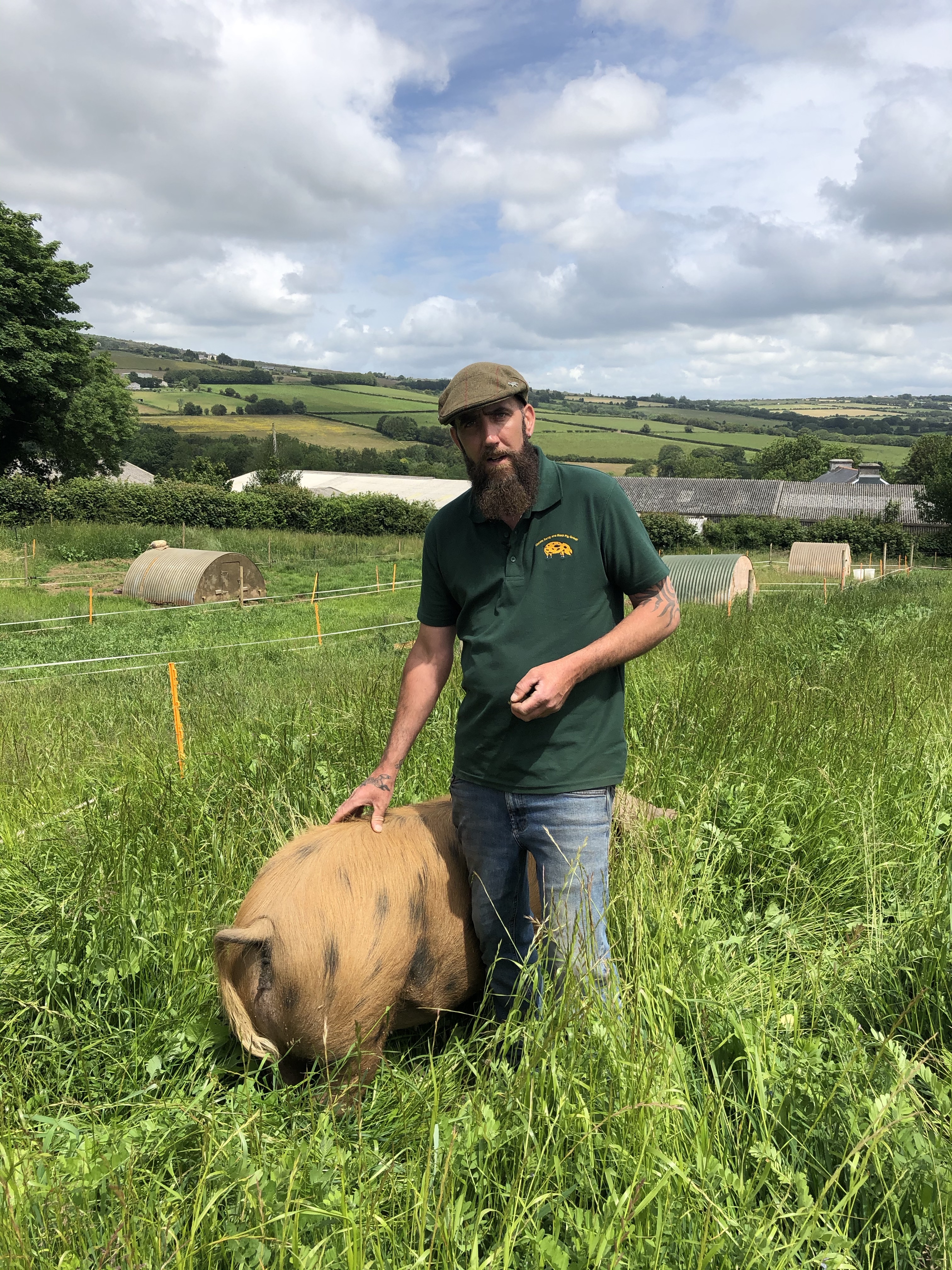

First Hand Case Study with Justin Newman
Farm Type: Pastured pigs
Location: Cornwall
Size: 0.7 acres
Soil Type: Fertile loam
Mixes Used: Special Pig-rooting Mix, Herbal Ley & Fast & Vast
Justin Newman is passionate about rearing pasture-fed pigs, producing flavoursome meat using a mixture of Pig- Rooting Mix, Herbal Leys and Fast and Vast, which include nutrient rich herbs, high protein legumes and healthy grasses.
Happy Wallow Farm comprises 0.7 acres. The soil is fertile loam. ‘It’s good pasture soil since it’s been years since crops were grown on this land,’ Justin says. ‘It was grazed by sheep for at least 20 years previously.’
It’s now grazed by Justin’s 4 breeding sows and 1 pedigree boar. The 2 sows are pedigree Oxford Sandy & Black and he also has 2 Tamworth crossed with Oxford Sandy and Black for better meat quality.
Justin started experimenting with the Cotswold Seeds’ Pig Rooting mix after looking out of his kitchen window and seeing the destruction the pigs were doing to the older, thin, poor pasture. He wanted to increase the number of pigs to meet demand for his pork. ‘In order to do that I wanted to have enough regenerative growth for the pigs to happily graze, without turning it all over, I didn’t want to look out of my window and see a field of mud.
‘What I am trying to do is establish a luscious pasture above ground to stop the pig rooting below, working on the theory that if there’s enough food above the ground the pigs are less likely to be looking beneath it,’ Justin says.
He uses a mixture of Pig-Rooting mix with Fast and Vast or Herbal Ley, which creates a blanket of clover at the base of the sward, this holds moisture, allowing good regrowth in the dry summer months.
The paddocks are harrowed or rotavated to level the ground and sown. The crops need no fertilizer since the pigs manure is sufficient.
‘I wanted a crop that looks after itself and sustains the pigs,’ Justin says.
A patch that’s sown in March will show fantastic growth by June and will keep a pig happy for two months. Justin lets the pigs graze down until there’s about four inches of growth left before he moves them, encouraging fast regrowth of the plant cover.
‘If I do have to move the pigs off, I allow two weeks before I let them back on again. Depending on the rainfall, this is enough time to allow for a decent amount of growth to come back.
‘Grazing pigs on pasture definitely produces a more succulent meat,’ Justin says. ‘Once the pigs are raised in a natural environment, on pasture, the flavour is enhanced. People have been put off eating pork. I used to think it was a grey, white coloured meat but actually when the pigs are reared on pasture, it’s rich and red.’
Justin looks out of his window now and sees his pigs roaming around in long grass, full of herbs, clovers, vetches and palatable brassicas. The tall growth means ‘It’s cool for them to lie on in summer and they certainly seem very happy. And a happy pig tastes better. ‘
Justin joined the Oxford Sandy & Black Group for advice on finding rare pedigree bloodlines which he wanted to reintroduce to Cornwall. He took photographs of his pigs in the herbal leys at Happy Wallow and posted them on the group’s Facebook page. Fellow members then messaged him asking, ‘how do you keep your fields so green?’ Many in the group now follow Justin’s model and purchase as a collective through Cotswold Seeds.
Pig Rooting Mix: Sowing & Growing Guide
Date Posted: 28th March 2022



